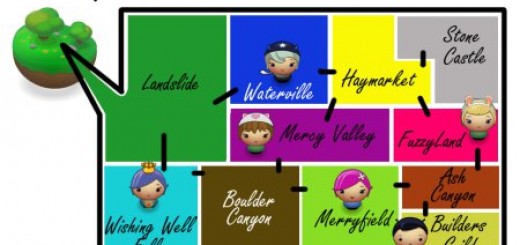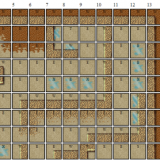Use Play Testing To Reduce Game Development Costs
What Is Play Testing?
This is a technique where you build a working version of your game and play it before you ever release the game to market. So you may be asking yourself, how does this reduce my game development costs if I need a working version of the game before I can play test it? The answer is simple: create your working game in an inexpensive medium. So what if your marketable game is going to have cutting edge graphics or high poly 3D models or even stunning visual effects that require months of complex mathematics and physics and matrices — with play testing you can see how well your core gameplay and mechanics work (or fail) without any of those expensive bells or whistles and in a lot less time.
How Do I Play Test?
I generally break this down into six steps.
1. Define your core game components, mechanics and boundaries
Start by sitting down and thinking about the core components of your game. How does your game work? How could someone play a physical manifestation of your game?
2. Write the game rules
Now that you know all of the components of the game you’ll need to write up a set of rules. Your play testers will use these so they know how they should play your game. If you can’t identify any rules for your game then you’ve found your first problem — you don’t actually have a game yet and it’s time to go back to the drawing board.
3. Gather your materials
Not all games need materials but you probably will even if it’s as simple as a few pencils and some blank sheets of paper. It’s time to visit a local arts and crafts store and buy whatever you think is necessary for someone to play a simplified version of your game — be creative to keep your costs low (ie use paper balls instead of nerf balls). You will need enough materials for at least one person to play your game. If your game is multiplayer you may need to invest a bit more so you can let multiple people play together.
4. Get lots of people to play your game
This is pretty much self explanatory but it’s also a really deep topic. Other than to say the more people who you can get to play the better, I’ll come back to it later.
5. Analyze your results
You can take a lot away from a play testing session. Did your player(s) struggle understanding the rules or sticking to the rules because they weren’t clearly defined or they didn’t make sense. Did your players pick up the general mechanics and components of the game quickly? Even if you have a negative response to both of these areas don’t panic! This is a good indication that your rules need improvement and that other materials or aids might be required (ie tutorials) before your players can really understand what you’re asking them to do.
6. Finding the fun
Ultimately your play testing session boils down to did your player(s) enjoy themselves? Was it so long and complex that they quickly lost interest or was it so fast paced that they finished almost as soon as they started? Where they laughing and becoming immersed in the experience or growing frustrated and angry? Did they feel sufficiently challenged? Some people find asking their play testers questions about their experience helpful and often times will ask for them to fill out a feedback sheet or a survey when they’re done. Personally I prefer just watching people play. Watching someone play your game will give you a huge amount of feedback and target areas in need of improvement all without breaking the bank. Remember that it’s okay to go back to square one and start again if your play testers don’t have a positive response to your game. The best part about negative feedback is that it just saved you from spending lots of time, energy, resources and money on a game no one thinks is fun.
Who Should Be Play Testing Your Game?
Okay so I kind of glazed over step four because I wanted to devote a whole section to it. I always start play testing with my target audience. Your target audience should be the age range and gender you believe your game will most appeal to. For instance, if I was intending to make a game for young children I would keep in mind their computer skills, the types of devices they are most likely to play on, their hand-eye coordination, their cognitive abilities in understanding themes, stereotypes and story development. Each of these would be adjusted based upon what I expect young children would find fun and amusing — loud silly noises, larger buttons, brighter colors, less text to read and rules introduced slowly and over time to build complexity.
Now your target age range and genders should all be play testers — but so should other groups. Don’t limit yourself to only your target audience or your may miss gaining valuable insight to how people play and interpret your game. Although you may be designing a game for young children you may find that your target audience has missed it’s mark when the young children have only negative responses to your play testing sessions while a different group of play testers find your game the perfect mix of fun and challenging entertainment.
There’s also a matter of size to consider. Even if your game is single player, what happens when you ask two people to play it together? This may (or may not) change your game dynamics for the better or lead you in a completely different direction that ends up becoming something much more successful that what you had to start with. In that same vein, push the limits. What happens if you triple the number of players who are playing at a time? This is especially important for multiplayer games where your play testers end up being on a small segment of the number of players who will ultimately be playing your game. You might suddenly find your calculations for resource management fall short when your player base grows exponentially or that the influx of players completely changes the pace and feel of the game — for good or for bad.
So, What Are The Advantages of Play Testing?
- Testing early makes it easier to discover and fix problems
- Increasing and decreasing the number of players at a time can help you find new and interesting perspectives and aspects of your game you had not yet considered improving or expounding upon — and they may be the best features of your game
- You can work in a controlled environment and see how your games is affected by a specific number of players influences game factors such as economy, resource depletion, or competition.
- Watching people play will help you areas of the game players find confusing or not challenging enough
- You can find your true target audience, not what you think or feel your target audience should be
- Players can give you valuable feedback before the game is put out to market
- Reduced costs of game development, you won’t have to go back and fix features of the game players don’t like when the game is out to market — you’ve already identified those areas through play testing
- This gives you the ability to go back to square one at any point in time, and then bring your changes back to your play testing groups until you get it right
Summary
Game development is expensive so do yourself a favor and make sure you’re spending your money on a game that’s going to help you reap the rewards of all your hard work. Play testing is easy and much cheaper than spending your money on a game that’s only going to flop when it hits the market.













